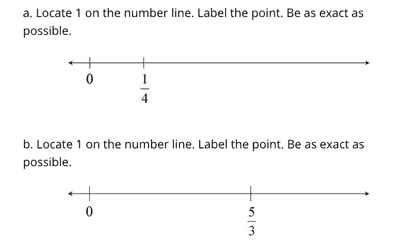Editor’s Note: The professional development modules mentioned in this post can be accessed here for ELA and here for Math.
Remember the days when virtually every 3rd grade mathematics test in the country had a question that looked like this?
Select the fraction represented by the shaded part of the rectangle.
Or, what about the reading items that were straight recall? A passage would note that a character wore a red sweater, and, inevitably, one of the questions would ask:
What color was the sweater Joe wore?
- Blue
- Green
- Red
- Purple
And then along came the Common Core State Standards (CCSS). Verbs like “understand” and “analyze” seemed to be plastered throughout the Mathematics and ELA standards. We looked around at our colleagues in the assessment industry, and they had one question: “How on earth can we write test questions that meet the higher expectations of the CCSS and actually attended to these verbs?”
In both content areas, we had countless conversations about how to adjust assessment items to truly meet these standards. Consider the math sample item shown above. The Common Core grade 3 standard requires students to “understand” that a fraction is a number. How might a question like this be transformed to meet the expectation implied by the verb “understand”?
Take a look at the following example from Illustrative Mathematics.
Unlike the shaded rectangle, this example requires students to have a strong understanding of partitioning and the meaning of the denominator; it requires students to understand that 4/4 and 3/3 are equal to 1, and it requires students to use that knowledge to locate the number 1 on each number line using the given referents.
This Illustrative Mathematics example, along with many others like it, are included in the Mathematics Assessment Item Alignment Modules. There are also Item Alignment Modules for English Language Arts/Literacy. Across both subjects, these resources are designed to support professional learning that deepens users’ understanding of the Shifts and Standards through the lens of summative assessment items. Like the example shown above, assessment items serve as a powerful tool for teachers to better understand the expectations of the Standards and consider what changes to instruction must occur to help students meet those expectations.
In mathematics, there is one module per grade for grades 3-8, and one module for high school. Each mathematics module includes the following:
- Ten principles of aligned assessments grounded in the Instructional Shifts
- Example assessment items, including several released items from PARCC, Smarter Balanced, and New York State,to illustrate the principles
- Notes that provide an answer key and a description of the item’s alignment to the stated principle
In ELA/Literacy, the modules are actually a two-part training. Part One, the High Quality Reading Items Module, applies to all grade levels. This training provides teachers with an overview of the elements of excellent summative assessment reading questions. It discusses the characteristics of close reading, questions worth asking, use of textual evidence, and introduces the idea of aligning questions to the specifics of the grade-level standards. The module explains each characteristic, as well as provides examples of items that both meet and do not meet the characteristics.
Part Two of the ELA/Literacy training is a set of individual grade-level modules, one for each grade, 2-8, and individual modules for grades 9-10 and 11-12. Each grade-level module includes the following:
- A slide for each Reading for Literature and Reading for Information standard
- Example assessment items that both meet and do not meet the expectations of the named standard
- Notes that provide an answer key for each question as well as a description of the item’s alignment to the stated standard.
The modules for both ELA and Mathematics are a complete set of training materials. To that end, they come with a User Guide, which explains the various ways that the modules can be used depending on the audience. Additionally, there are activities that can be used to support teachers in applying the important takeaways to classroom-based tests, such as those found in textbooks.
So what are you waiting for? Grab a glass of wine (NOTE: not during school), and take a peek at the Assessment Item Alignment Modules to see what new assessments are expecting your students to know and be able to do. Use some of the questions with your students to build meaningful discussions. Use the modules as source of conversation about the expectations of college and career readiness with your professional learning communities. And most importantly, evaluate how the teaching and learning in your classroom is preparing students to meet the expectations illustrated by the items shown in the modules.



















